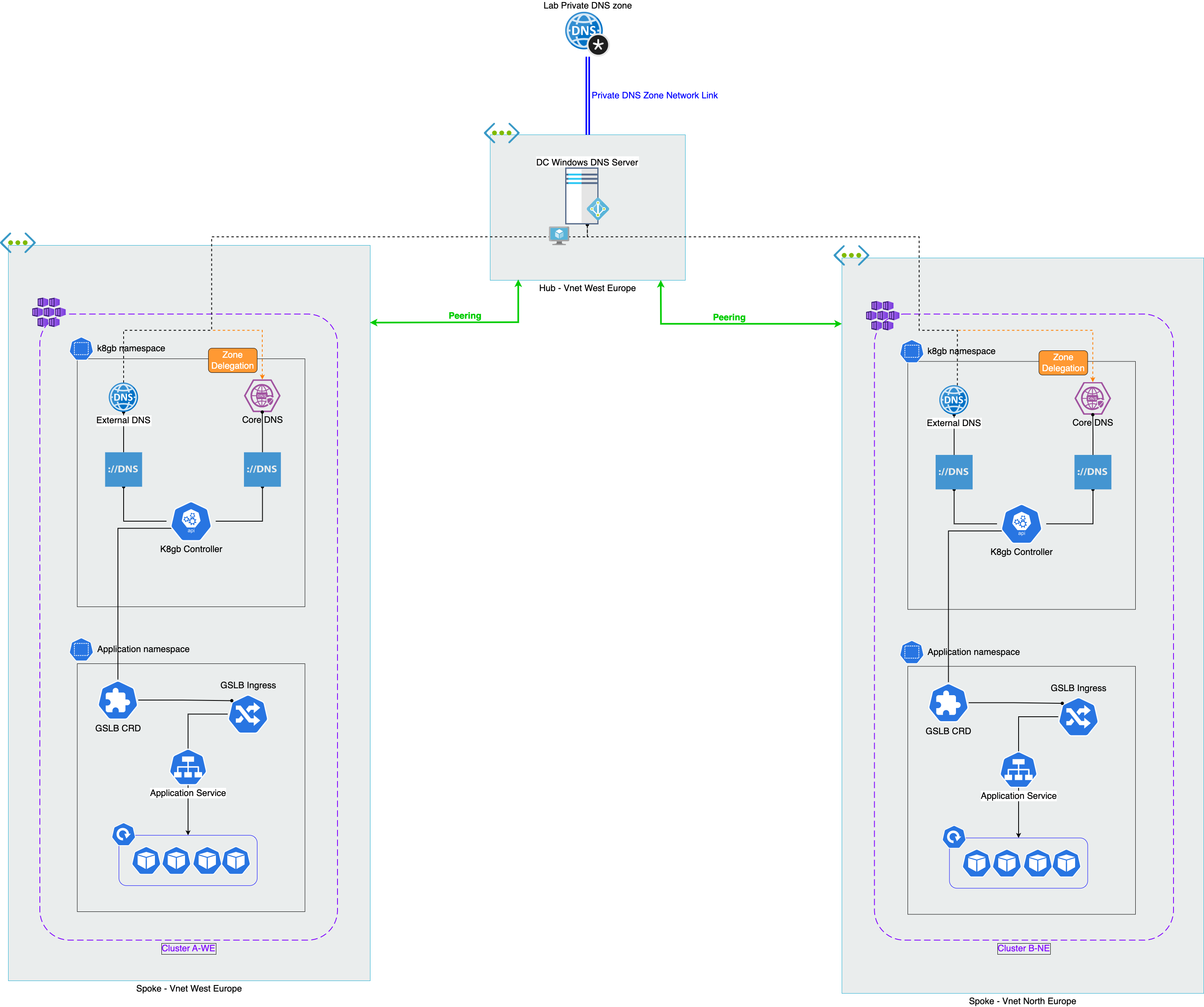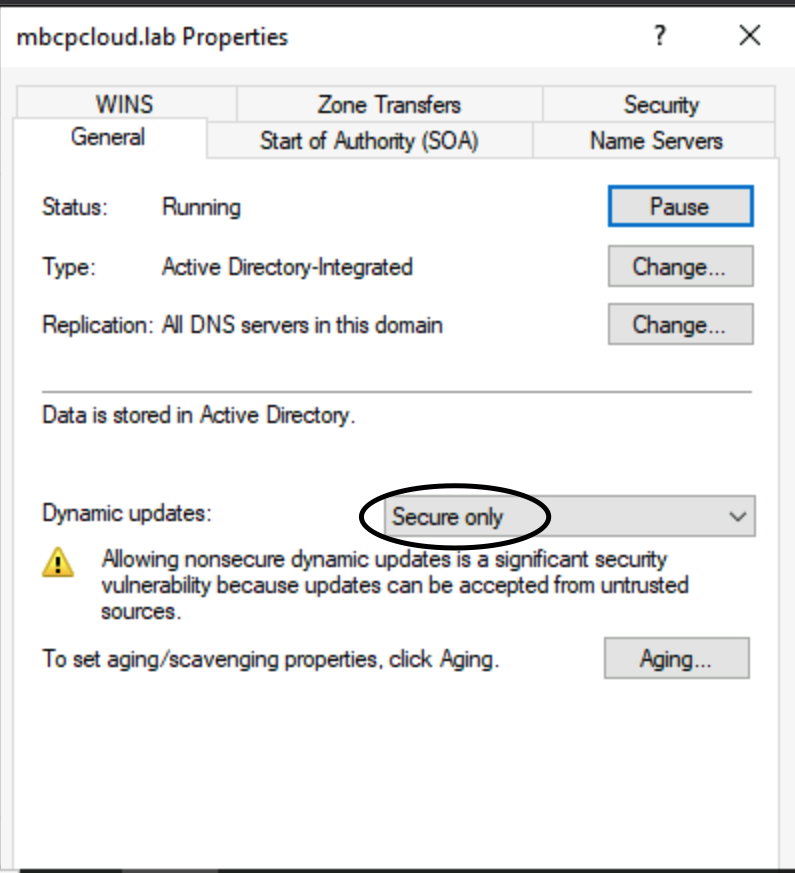Using K8GB with a GSS-TSIG compatible DNS provider
Sample solution: Azure based private deployment with Windows DNS integration
In this sample solution we will create a common hub and spoke architecture with two private AKS clusters in different regions. The same pattern can be used with any other Kubernetes distribution and any other DNS provider that supports GSS-TSIG.
Here we provide an example of k8gb deployment in Azure environment with Windows DNS as edgeDNS provider.
Reference Setup
The reference setup includes two private AKS clusters that can be deployed on two different regions for load balancing or to provide a failover solution.

The solution design can be found here.
Configurable resources:
- Resource groups
- VNet and subnets
- Peering
- Managed Identity
- Clusters
Run the sample
-
This lab requires a running AD Domain Controller with DNS and KDC services working
- There are several tutorials available online, but this Microsoft Learn article will probably help you out
- Microsoft Learn
-
To run the provided sample, please use the provided Makefile here.
- Deploys all the required infrastructure and configurations
- Before executing, please fill all the local variables in the scripts with the correct naming for the resources in order to avoid having problems with your Azure policies
- Scripts will use Az CLI, please ensure that it is installed and logged when trying to execute the command
Deploy infrastructure
This action will create resource groups, vnets, peering between vnets and private AKS clusters to run all required workloads
make deploy-infra
Setup clusters
Install required Ingress controller in both clusters in order to deploy K8GB and demo application
make setup-clusters
Configure GSS-TSIG authentication for DNS updates
Before deploying K8GB and the demo workload, ensure required configurations on Windows DNS
Domain Controller config
- Ensure that the Network Security is configured only for AES256

- Ensure that the DNS Zone has only Secure updates option enabled

- Ensure that the DNS Zone has the option "Allow zone transfers" check with the option "To any server" under the tab Zone Transfers on the zone properties

- Create a new Active Directory user
- The user should be created with "Encryptions options" for Kerberos AES256 encryption
- The user needs to be added to the DNSAdmin group, or,
- Select the zone that will have dynamic updates in DNS Manager, right click and select Properties. Under the Security tab, add the created user and add the permissions Write, Create all child objects and Delete all child objects
K8GB / ExternalDNS configuration
- ExternalDNS configuration
- For communication with WindowsDNS, ExternalDNS should be configured with the RFC2136 provider with GSS-TSIG option
- External DNS - RFC2126
- A sample values.yaml for K8GB configuration can be found here.
- Ensure that the following properties are updated with your values:
- dnsZone
- edgeDNSZone
- parentZoneDNSServers
- host - always use FQDN with GSS-TSIG, not IP address
- kerberos-username
- kerberos-password
- kerberos-realm
- Ensure that the following properties are updated with your values:
- At this moment ExternalDNS doesn't provide a way to use secrets as the source for the kerberos-password setting, so you must ensure this is stored in a secure way
rfc2136:
enabled: true
rfc2136Opts:
- host: AD-DC.k8gb.local #when using gssTsig, use the FQDN of the host, not an IP
- port: 53
rfc2136auth:
insecure:
enabled: false
tsig:
enabled: false
tsigCreds:
- tsig-secret-alg: hmac-sha256
- tsig-keyname: externaldns-key
gssTsig:
enabled: true
gssTsigCreds:
- kerberos-username: ad-user-account
- kerberos-password: ad-user-account-password
- kerberos-realm: cloud.lab
Install K8gb
This action will install K8gb in both clusters using the provided sample values.yaml for each cluster. Please ensure that the are correctly updated before execution
make deploy-k8gb
Install demo app
Deploys the sample Podinfo workload with failover GLSB configured using annotations in the Ingress resource samples. Ensure that the hosts on the samples are correctly updated before execution
make deploy-demo
Destroy lab
- Destroys the lab environment created for this sample
make destroy-infra
